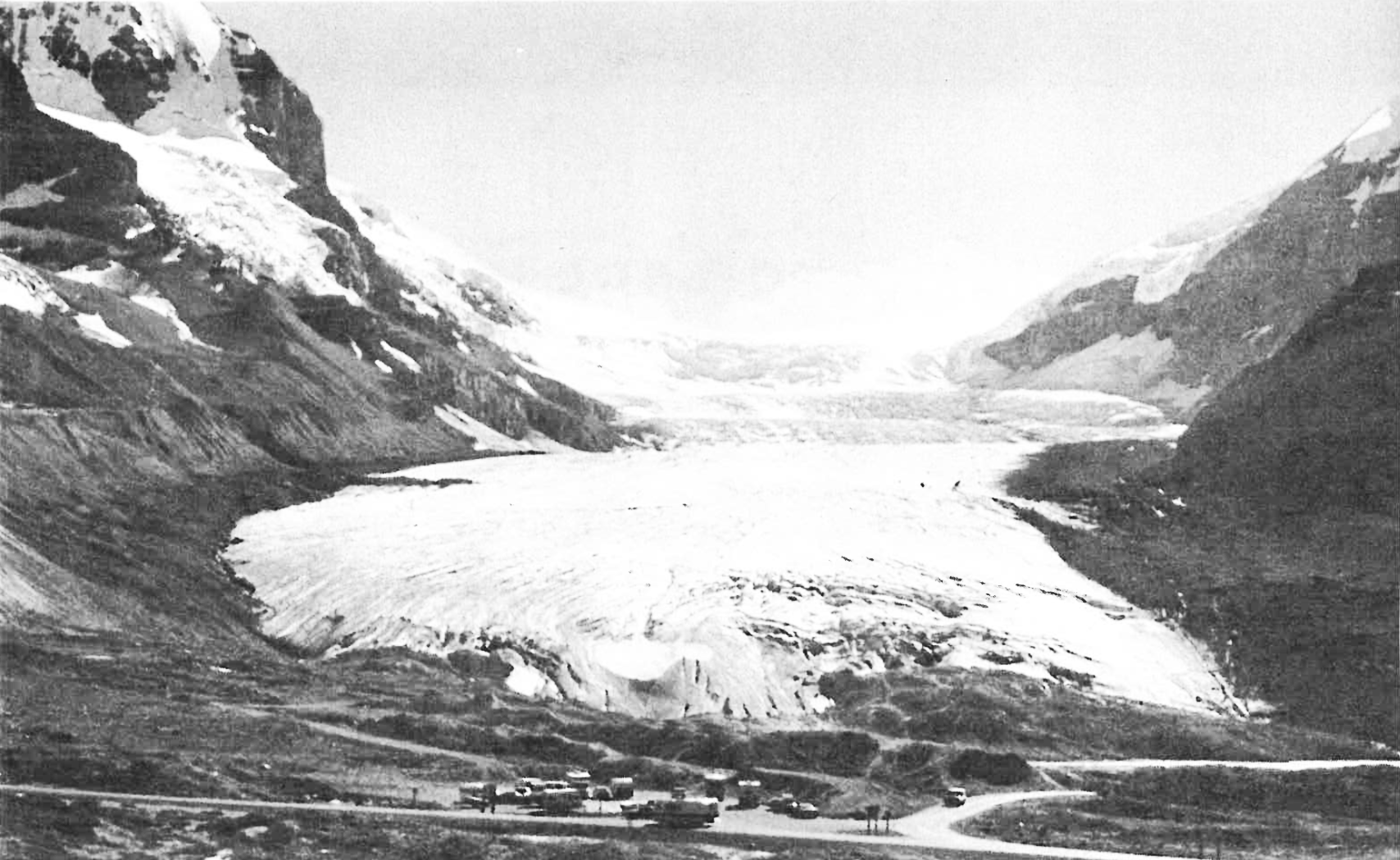©Copyright 2018 GEOSCIENCE RESEARCH INSTITUTE
11060 Campus Street • Loma Linda, California 92350 • 909-558-4548

RECAMBRIAN AND PALEOZOIC GLACIATION?
by
W. W. Hughes
Department of Biology,
Andrews University
The slow but powerful action of glaciers has fascinated man for centuries. The work of glaciers and the characteristic landscape features left by the movement of these huge quantities of ice has been the subject of considerable investigation. As a glacier retreats it often leaves a number of tell-tale signs of its past presence. These include hanging valleys perched high above other large carved U shaped valleys, till (pieces of unsorted ground rock) deposited below or along the sides of a glacier in the form of ground or lateral moraines (Figure 1), striations (scratches) and polish left by the grinding action of ice and rock and a host of other features. Some of these characteristics are used to tell where a glacier may have been in the past, even though no ice is present now. Numerous deposits of reported glacial origin are observed throughout the geologic column. Their presence can significantly affect one's interpretation of the amount of time involved in deposition. Most familiar are glacial deposits associated with the more recent and surficial "Pleistocene ice age"; however, of special interest are very ancient Precambrian and Paleozoic deposits which are attributed to previous glacial activity. Presumed very ancient glacial deposits are reported from every continent. Two examples are the Precambrian Kingston Peak formation near Death Valley, California, and "Reusch's moraine" in Norway. Glacial features such as tills, glacial pavement with striations, and faceted and striated boulders are generally presented as evidence. Are other interpretations (non-glacial) of the data justified? Some researchers say "yes."

Dunbar (1940) questioned the glacial origin of the Carboniferous tillites (cemented till), striated boulders, and glacial pavement of San Juan, western Argentina. He concluded that the regional geology indicates that the striated pavements were slickensided fault surfaces, and the striated pebbles and tillites were the result of landslides and mudflows.
It has been suggested (see Lakshmanan 1969) that the Precambrian (Vindhyan) deposits in central India are of glacial origin. However, Lakshmanan states that "the evidence offered for Vindhyan glaciation are disputable and wholly unconvincing." He concludes that: 1) the tillites could be mudflow deposits and, 2) the mudcracks, ripple marks, rain-print impressions, stromatolites and limestones are generally associated with warm climates.
Newell (1957), after examining reported Permian tillites in northern Mexico, concludes that the "Mexican boulders and volcanic rocks most probably are submarine slide deposits...."
The presence of striated pavement may at first seem to be solid evidence for glacial activity. Crowell (1963) proposed that the striations present in the quartzite underlying Reusch's moraine in Norway may have formed when the pebbles in subaqueous mudflows or slumps were impressed into soft sand. The presence of a pebble at the end of a striae impressed into the quartzite was noted.
Not all glacier-like features can be attributed to geologic causes. Berkland and Raymond (1973) reported Pleistocene glaciation in the southern Appalachian mountains, North Carolina. However, their evidence was disputed by Hack and Newell (1974), who commented that the "grooves" were "made by moving cables used in logging operations." McKeon (1974) also agrees that they are man-made rather than glacial.
These examples indicate that geologic features which resemble those associated with modern glaciers may be formed by mechanisms other than ice. Crowell (1963) examined the geologic processes that could account for such similarity; his list includes slumping, mud-flows, turbidity currents, giant slide blocks, volcanic lahars, talus debris, and weathering of conglomerates. Presently, much controversy still exists over the glacial origin of some ancient deposits. Alternative geologic processes are numerous and at times not completely understood. The mechanism, whether it invokes unusual events such as giant tides or persistent freezing weather, is of significance to our understanding of earth history.
REFERENCES
- Berkland, J.O. and L.A. Raymond. 1973. Pleistocene glaciation in the Blue Ridge Province, southern Appalachian mountains, North Carolina. Science 181:651-653.
- Crowell, J.C. 1963. Climatic significance of sedimentary deposits containing dispersed megaclasts. In Nairn, A.E.M. (ed.), Problems in Paleoclimatology, pp. 86-99. Interscience Publishers, John Wiley & Sons, New York.
- Dunbar, C.O. 1940. Validity of the criteria for Lower Carboniferous glaciation in Western Argentina. American Journal of Science 238:673-675.
- Hack, J.T. and W.L. Newell. 1974. North Carolina Glacier: evidence disputed. Science 181:89.
- Lakshmanan, S. 1969. Vindhyan glaciation in India. Vikram University Institute of Geology Journal 2:57-67.
- McKeon, J.B. 1974. North Carolina Glacier: evidence disputed. Science 184:88-89.
- Newell, N.D. 1957. Supposed Permian tillites in Northern Mexico are submarine slide deposits. Geological Society of American Bulletin 68:1569-1575.